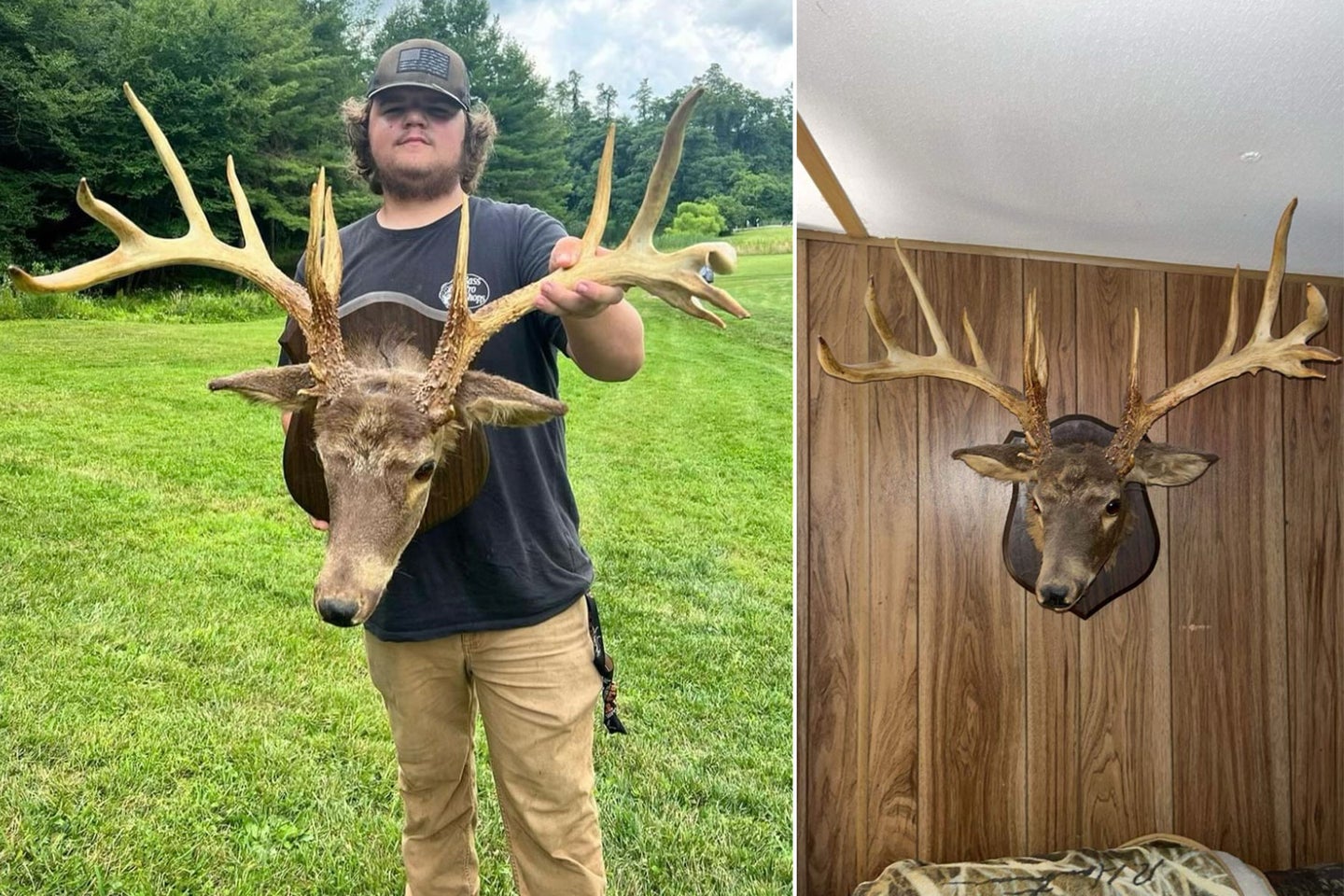Buck Killed in 1971 Set to Become New Virginia State Record “Semi-Irregular” Whitetail

Michael Snead says he’s been a deer hunter since he was old enough to walk, thanks largely to his grandfather, Herman Snead. During whitetail seasons when Michael was younger, he’d spend the night before a hunt at his grandfather’s house, where a wide-racked buck mount that hung on the wall inspired him to dream big.
“I remember waking up in the morning, and I’d look at it and think, ‘I hope something like that walks out today,’” Snead told Field & Stream. “I’d get up every morning with Papa, and we’d go out and run dogs.”
When Michael got older and added bowhunting to his whitetail repertoire, he and a cousin would often discuss the 17-pointer, which Herman Snead shot near the Snead homestead in Nelson County, Virginia, in 1971, when he was 21 years old. “We used to talk about it all the time,” Michael says, “how it would be to look up the mountain and see something like that coming through the trees.”
The Snead Buck Makes the Books
After wondering for years what the buck might score, Michael decided this summer to find out: On July 15, he took the mount to the Star City Whitetails Awards Banquet in Roanoke, where Buckmasters official scorer Anders Blixt became the first person ever to put a tape on the rack. The score he tallied—197 2/8 inches—is the highest recorded on a Virginia whitetail with a semi-irregular rack in the centerfire rifle category. It’s the fourth highest semi-irregular score for any weapon recorded from Virginia in the Buckmasters Whitetail Trophy Records (BTR) database.
Under the Buckmasters system, antlers are divided into four classifications: perfect, typical, semi-irregular, and irregular. A perfect rack has the same number of scorable typical points on each main beam, and its irregular antler growth amounts to no more than 1 percent of its total inches. A semi-irregular rack is one whose irregular inches range from 5.6 to 10 percent of its total inches, according to the Buckmasters Antler Scoring Handbook.
Herman Snead’s buck sported main beams of 25 and 20 inches, G4s measuring 10-plus inches, and a whopping inside spread of 26 inches. While Buckmasters includes the inside spread measurement in its BTR score, it uses only total inches of antler—171 and 2/8 inches for Snead’s 8 by 9 rack—when ranking bucks in its trophy database. It also maintains separate rankings for each weapon: Firearms rankings are composed of separate categories for centerfire rifles, shotguns, pistols, black powder rifles, and air guns.
At 171 2/8, Herman’s buck tops the previous Virginia record in the Buckmasters book, an 18-pointer with 168 4/8 inches of antler and a BTR score of 189 1/8. That deer was taken by Danny Senic in Bland County on Nov. 16, 1976.
A Family Legend in the Spotlight
“Back in the 60s and into the 70s, to shoot a buck at all was a trophy deer,” says Jeff Phillips, the founder of Star City Whitetails and organizer of the banquet. “Deer weren’t as plentiful as they are now, so a deer of that caliber in 1971? Wow! We were all startled when he walked in with the mount. It was a showstopper. Everybody really enjoyed seeing it because of its age and the old-style taxidermy, but even if I shot that buck today it would attract a lot of attention.”
Michael says his grandfather didn’t talk much about the deer—“It was just always there, all my life and all my father’s life,” he says—but he recalls Herman telling him once that he had killed the buck while hunting with dogs in Nelson County with a 30.06.
Running hounds for deer is a deep-seated tradition throughout eastern Virginia. According to a 2016 report on deer hunting with dogs commissioned by the Virginia Department of Game and Inland Fisheries, in the state’s Tidewater region 73 percent of deer hunters used dogs, accounting for 86 percent of all deer harvested in the region. In the Southern Piedmont, about half of deer harvested were taken by hunters with hounds.
Michael Snead says his grandfather, who died in 2017, would have been surprised at the stir the buck has caused. “He was a more down-to-earth man, but I feel like he would have been happy to know that everyone has seen it and knows what it scored. And I feel like he’d be proud of me that I went up there and got it scored for him. That’s the only reason why I did it—for him.”
Read Next: The Full Story of the Biggest Typical Archery Bull Elk of All Time
For decades the 17-pointer has stood as the buck to beat in the Snead family. That it can now play the same role for an entire state—at least in one specific Buckmasters category—is pretty special, Michael Snead says.
“I just wanted Papa’s name in the book. He hunted his whole entire life and never killed anything bigger—or close to bigger—than that. It’s a once-in-a-lifetime animal, from my hometown where my whole family has grown up, and my Papa killed it when he was young. You just gotta thank God every day for letting you be out there to chase American whitetails in the state of Virginia.”
The post Buck Killed in 1971 Set to Become New Virginia State Record “Semi-Irregular” Whitetail appeared first on Field & Stream.
Articles may contain affiliate links which enable us to share in the revenue of any purchases made.
